Notes
Trial by Slide Show? On Lens, Molhem Barakat and the Reuters Scandal
A week ago Thursday, the New York Times Lens Blog editor James Estrin and Karam Shoumali wrote a powerful post about Reuters and its use of freelancer photographers in Syria. The post raised serious questions about the ethics of Reuters’ visual news gathering methods and the objectivity of the photographers supplying news photos of rebel activity.
To the extent those charges were specific, Estrin and Shoumali concentrated on how the Reuters photographers were represented with pseudonyms or without any identification at all. Whereas this practice, on the surface, would appear to ensure the safety of visual journalists working in a highly dangerous environment — a rationale Reuters went on to invoke two days ago in a more specific and damning follow up article written by Donald Winslow for NPPA.org – Estrin and Shoumali propose a different motivation. The intimation is that Reuters, at least in some cases, has been protecting these identities because the photographers are either biased toward the Syrian rebels or are actually propagandists fighting for the same insurgents that they are documenting as photojournalists.
Nowhere is the Lens article more controversial, however, than in the treatment of Molhem Barakat. Molhem, if you recall, was the 18-year-old Syrian photographer who drew widespread sympathy and concern from around the photojournalism world when he was killed last December in Aleppo working as a stringer for Reuters. At the time and since, the media, photo news media and photo blogs have generally cast Molhem as a victim, as a youth (employed as a stringer before he was legal age) whose skill with the camera (his expensive gear supplied by Reuters), in tandem with the photo agency’s overwhelming determination to acquire imagery of the hellish Syrian civil war, put him in a situation that spelled his demise.
It’s not like any of the reporting on the story painted Molhem as a Pollyanna, however, or someone untainted or ideologically clean-handed either. From the first reports of his death, it was clearly stated that Mohlem’s brother was fighting for the insurgents, that Molhem had previously participated in the resistance and that the photographer’s heart remained with the cause. Context being everything, however, most stories also describe Molhem as talented and idealistic, respected by fellow journalists and more dedicated to the camera, to Reuters, and to documenting the conflict then he was to the attraction to take up arms. Naturally, these stories also noted the inherent and not unprecedented nature of the situation, that all reporters have their persuasions and that reporting from sympathizers was better than none at all.
If you read the NPPA article on Reuters and their handling of Syrian freelancer photographers, you know that this story has opened up a major can of worms. In one sweep, the NPPA’s allegations address: the cavalier employment of activists, tainted sources, fake identities, allegations of staged photographs, questionable safety practices, unusual payment inducements, and more. (At Bag, we are specifically looking again at the photos of Issa, the child bomb factory worker in Aleppo we initially wrote about last September, which we’ll have more on next week.) In the face of this scandal, what makes Estrin and Shoumali’s post contentious is the way it brings Molhem Barakat back into the discussion coincident with the raising of so many other alleged ethical breaches and infractions. This might simply be inadvertent, the consequence of telling the story from the beginning and putting so many allegations on the table at the same time. Either way, the result is to revisit the integrity and reliability of the Barakat narrative and put his motives and reputation in play.
If you read the piece, you’ll see how Estrin and Shoumali open by painting a picture of Molhem’s father and the tragedy of his two sons, one the activist and the other the photographer. Nowhere in the story is Molhem accused of anything, I should add. In fact, the post even cites a rescue he participated in while he was shooting for Reuters in a conflict situation. At the same time, however, Barakat’s engagement with Reuters is the spine upon which a litany of allegations are detailed through the story, making it ultimately unclear whether or how much these various allegations are pertinent to him.
It’s not that Barakat has been reframed directly by anything that Estrin and Shoumali have written, however. It happens as much through the structure and narrative of the slideshow which leads and accents the article. It’s here where the Lens post becomes of high interest to us, as well as to photography journalism and to photos and slideshows put into service as more robust journalistic content. It’s in the slideshow where allegations incubate and where photos and captions function as much as innuendo as background.
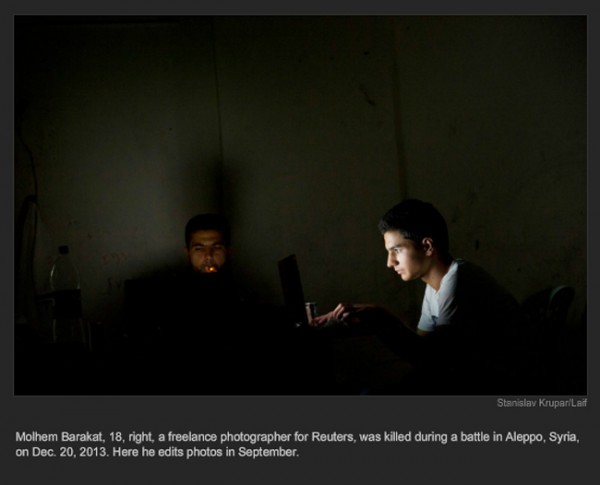
Leading this article about the unfolding Reuter’s controversy, we find five of the seven photos (the opening five) directly related to Molhem. The first stakes out his role as photographer, editing photos in the conflict zone, followed by four conflict photos he shot for Reuters. The way this many photo tandem with the account of scandal, however, the thrust is to highlight how Molhem seemed unusually – one might say, curiously — close to the Syrian resistance.
The role of the captions are instrumental, too. Notice how the captions in photo two and three depart in kind from the descriptive role of the first two. These captions do not just describe the action Molhem documented or reference Molhem as a casualty but they call out his presence and his hand – making a connection between the scene and his authorship of it when it otherwise would be taken for granted. Where the innuendo really occurs, however, is in the pivot to the sixth photo, the logical mind looking for a connection between the two.
Photo number six showing members of the militant ISIL rebel group (Islamic State in Iraq and the Levant) dragging a detainee they have just murdered, the caption explaining how a photographer ultimately identified himself as being a spokesperson for that group. (It doesn’t help, in the transition between the Molhem set and this one, that the ISIL is recognized as one of the most ruthless and violent extra-state players in the region.) The photo sets up a quality of guilt by association — on two scores. The first is the ambiguity between the role of the ISIL photographer and the article’s potential inference to Molhem as an sympathizer. Second (and this is the kind of thing that happens at a more subconscious level), there is the similarity of photo three, that Mohlem shot of the Free Syrian Army dragging the body of a compatriot, and the similar shot of ISI dragging away a detainee.
If not as toxic as the previous shot, the last photo — documenting what Len’s alleges as Reuter’s unethical publication of a photographer’s work under a pseudonym — closes out the slideshow (front loaded by Molhem’s work) in the tone of subterfuge. I can’t say if there is more to come out about Molhem’s motivation or allegiance. Even if the answer is a decided “no,” however, it’s troubling to think that the last word on his reputation might hinge on the slideshow, the visual association to a thickening scandal and a more nominal connection to suspect deeds.
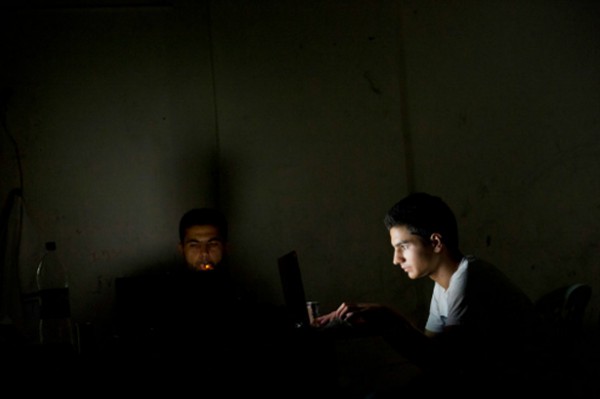
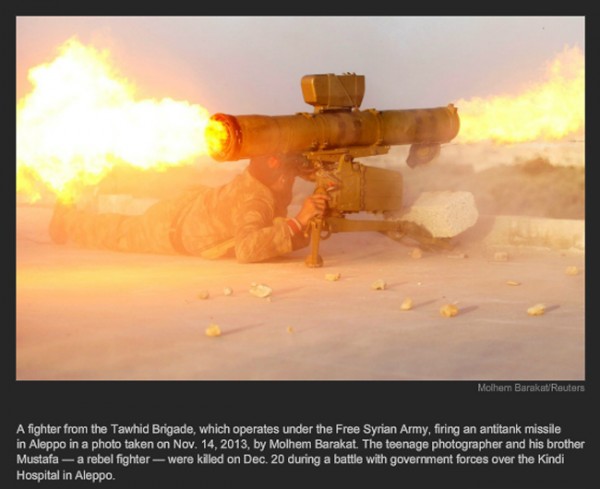
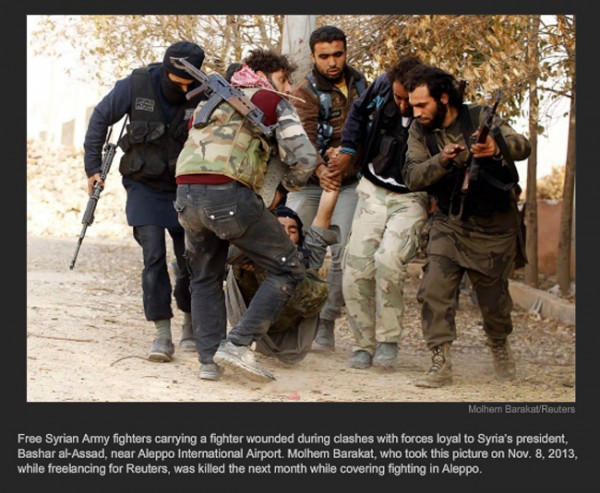
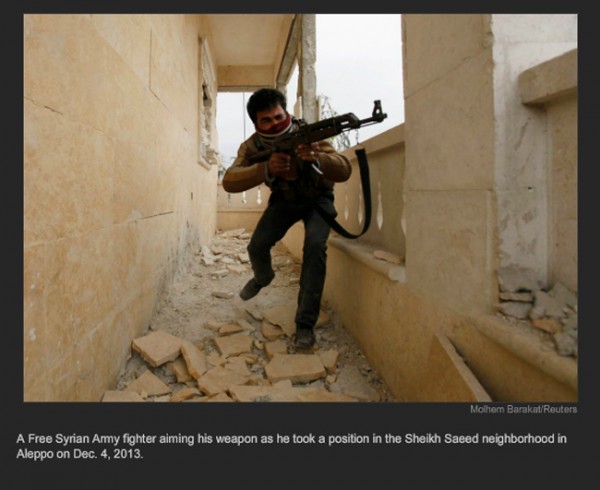
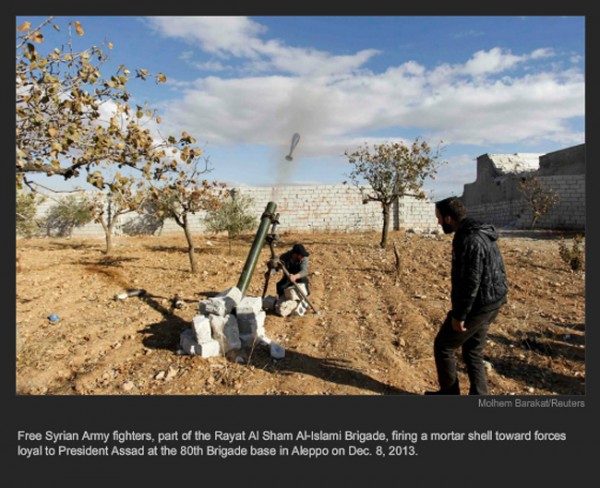
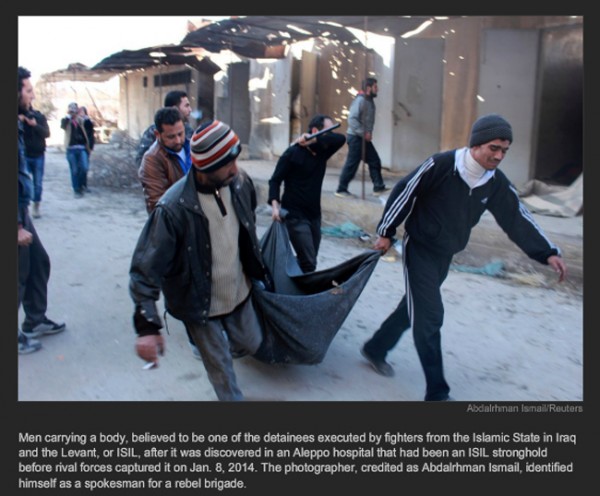
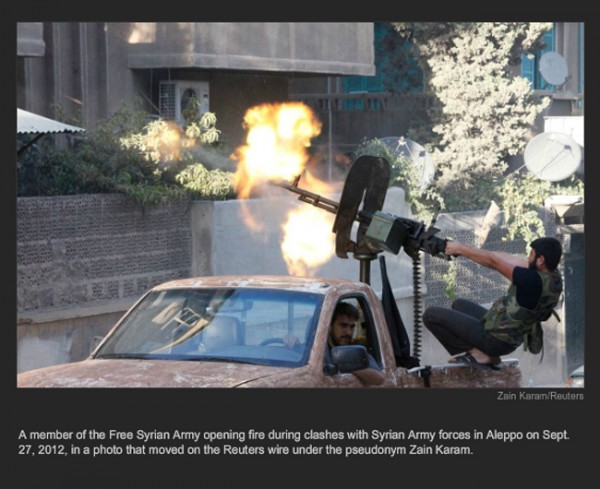
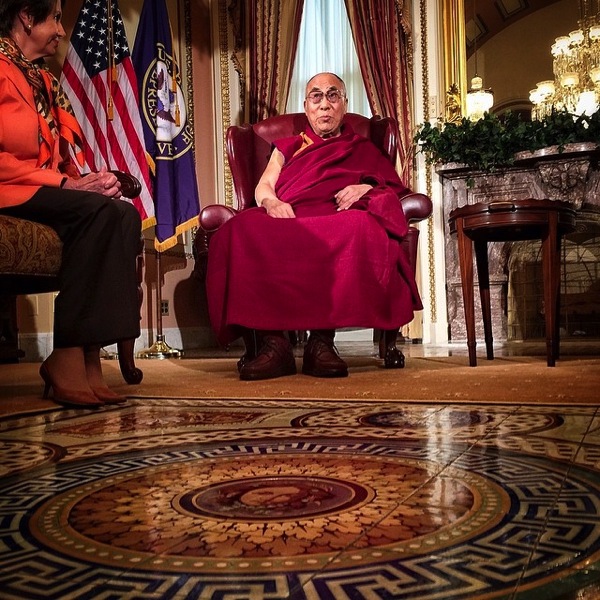
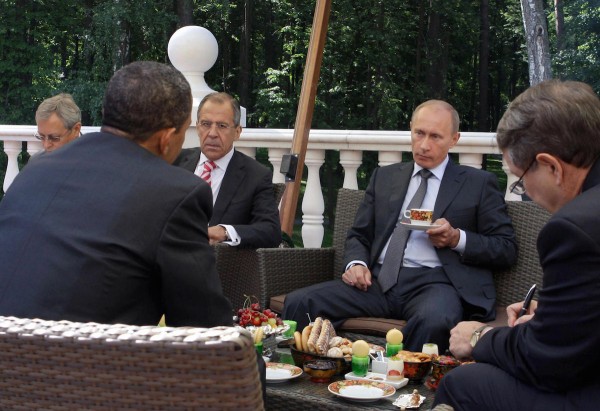
Reactions
Comments Powered by Disqus